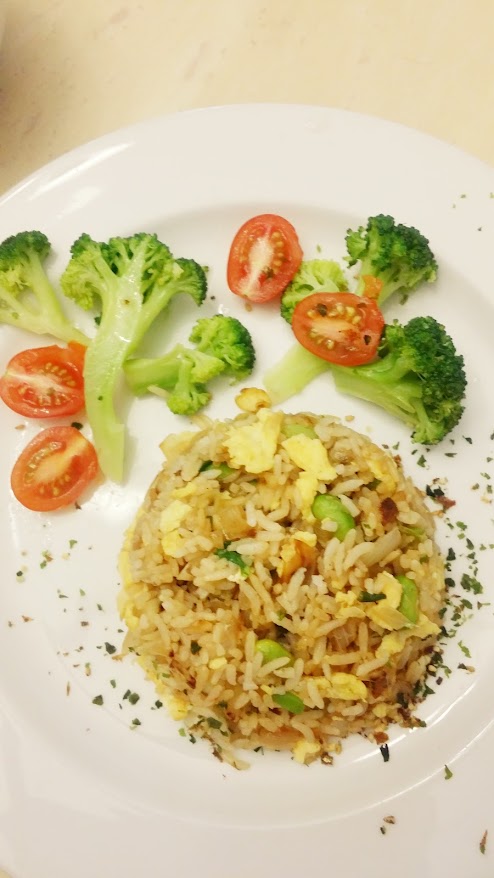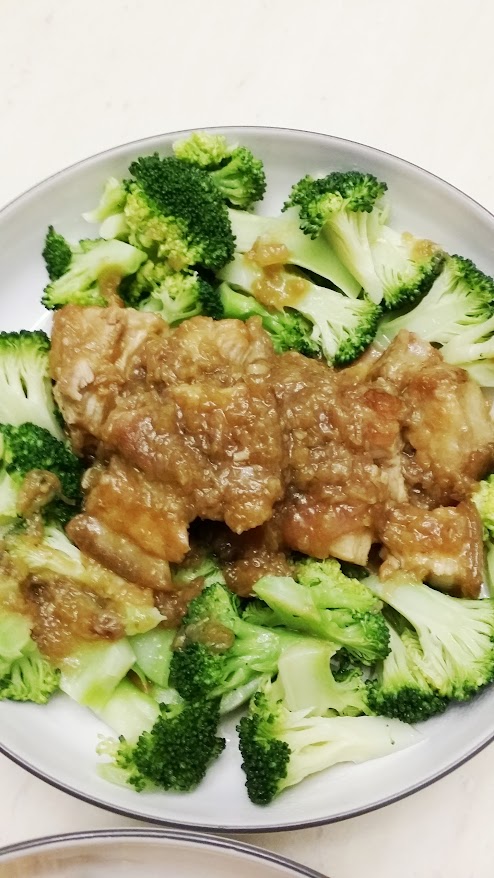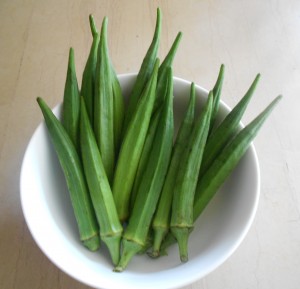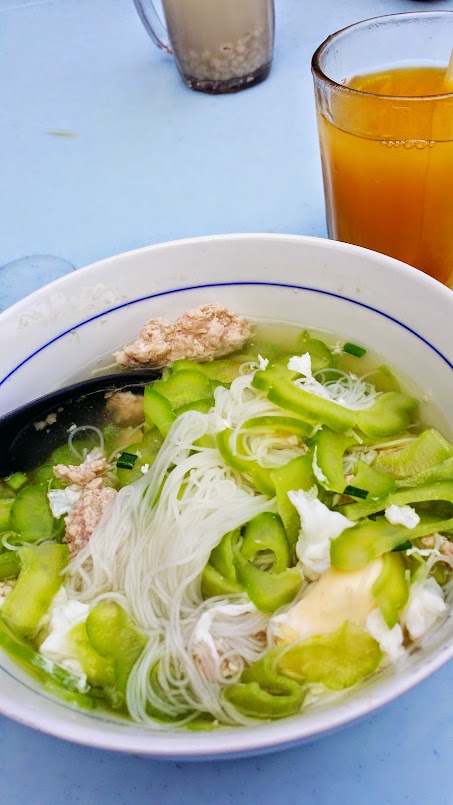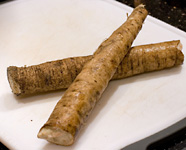One of my favorite herbs is dill. I love the pleasant and unique aromatic smell of dill. I use it in my roast meats and in bolognese sauces. This herb is pretty costly at our local supermarkets. A small punnet of a few sprigs of dill costs over RM6. My next project is to plant my very own dill in used plastic bottles or empty milk cartons at our tiny condo balcony!
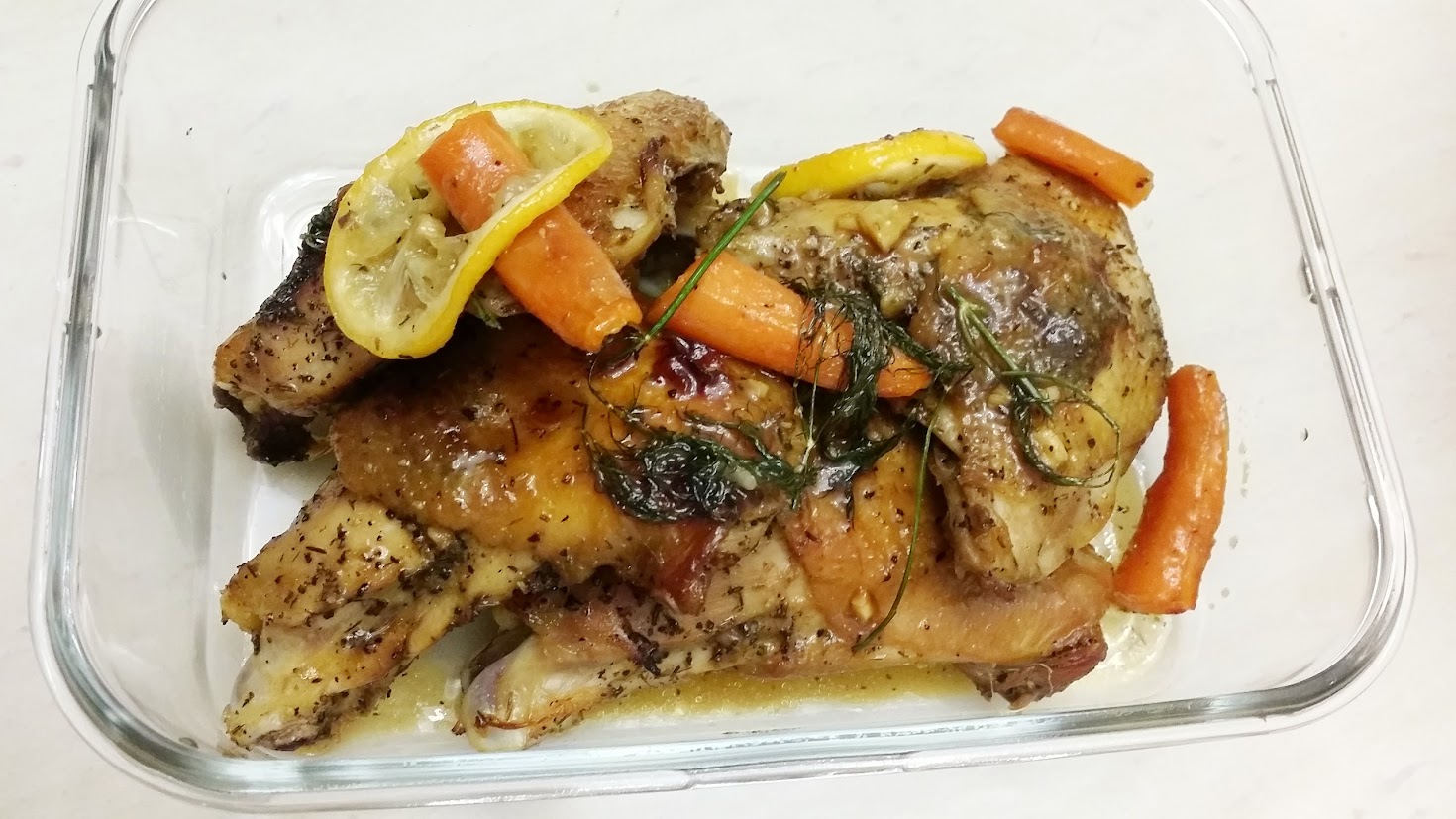
My grilled herb and lemon chicken with dill.
Dill weed is a unique perennial herb with pleasant anise-like flavor. Its sprigs (leaves) as well as seeds are employed as seasoning in various cuisines worldwide. Dill is the member in the Umbelliferae family, a large group of flowering herbs and spices that also includes caraway, parsley, cumin, fennel, etc.

Health benefits of dill
The health benefits of dill include its ability to boost digestive health, as well as provide relief from insomnia, hiccups, diarrhea, dysentery, menstrual disorders, respiratory disorders, and cancer. It is also good for oral care, and can be a powerful boost for your immune system and can protect you from bone degradation. It is also an anti-inflammatory substance, which means that it can protect you against arthritis. Furthermore, it can reduce excess gas, and is considered a carminative (i.e. can relieve flatulence).
Dill contains numerous plant derived chemical compounds that are known to have been anti-oxidant, disease preventing, and health promoting properties.
This popular herb contains no cholesterol and is very low in calories. Nonetheless, it holds many anti-oxidants, vitamins like niacin, pyridoxine, etc., and dietary fibers, which help in controlling blood cholesterol levels.
Dill is used for digestion problems including loss of appetite, liver problems, and gallbladder complaints. It is also used for urinary tract disorders including kidney disease and painful or difficult urination.
Other uses for dill include treatment of fever and colds, cough, bronchitis, hemorrhoids, infections, spasms, nerve pain, genital ulcers, menstrual cramps, and sleep disorders.
Dill seed is sometimes applied to the mouth and throat for pain and swelling (inflammation).
Dill leaves (sprigs) and seeds carry many essential volatile oils such as d-carvone, dillapiol, DHC, eugenol, limonene, terpinene and myristicin.
The essential oil, Eugenol in the dill has been in therapeutic usage as local-anesthetic and anti-septic. Eugenol has also been found to reduce blood sugar levels in diabetics. (Further detailed studies, however, require to establish its role.)
Dill oil, extracted from dill seeds has anti-spasmodic, carminative, digestive, disinfectant, galactagogue (helps breast milk secretion), and sedative properties.
It is also rich in many vital vitamins, including folic acid, riboflavin, niacin, vitamin A, ß-carotene, vitamin-C that is essential for optimum metabolism inside the human body.
Vitamin-A, and beta carotene are natural flavonoid antioxidants. 100 g of dill weed sprigs provide 7718 IU or 257% of recommended-daily levels of vitamin A.
Fresh dill herb is an excellent source of antioxidant vitamin, vitamin-C. 100 g contain about 85 mg or 140% of vitamin C. Vitamin-C helps human body develop resistance against infectious agents and scavenge harmful, pro-inflammatory free radicals.
Dill weed is a good source of minerals like copper, potassium, calcium, manganese, iron, and magnesium. Copper is a cofactor for many vital enzymes, including cytochrome c-oxidase and superoxide dismutase (other minerals function as cofactors for this enzyme are manganese and zinc). Zinc is a co-factor in many enzymes that regulate growth and development, digestion and nucleic acid synthesis. Potassium is an important component of cell and body fluids that helps control heart rate and blood pressure. Manganese is used by the body as a co-factor for the antioxidant enzyme, superoxide dismutase.
Dill herb has all the characters to consider it has one of the most valuable functional foods. 100 g of dill weed provides only 43 calories, but its phyto-nutrients profile is no less than any other high-calorie food source; be it nuts, pulses, cereals, or meat group.


